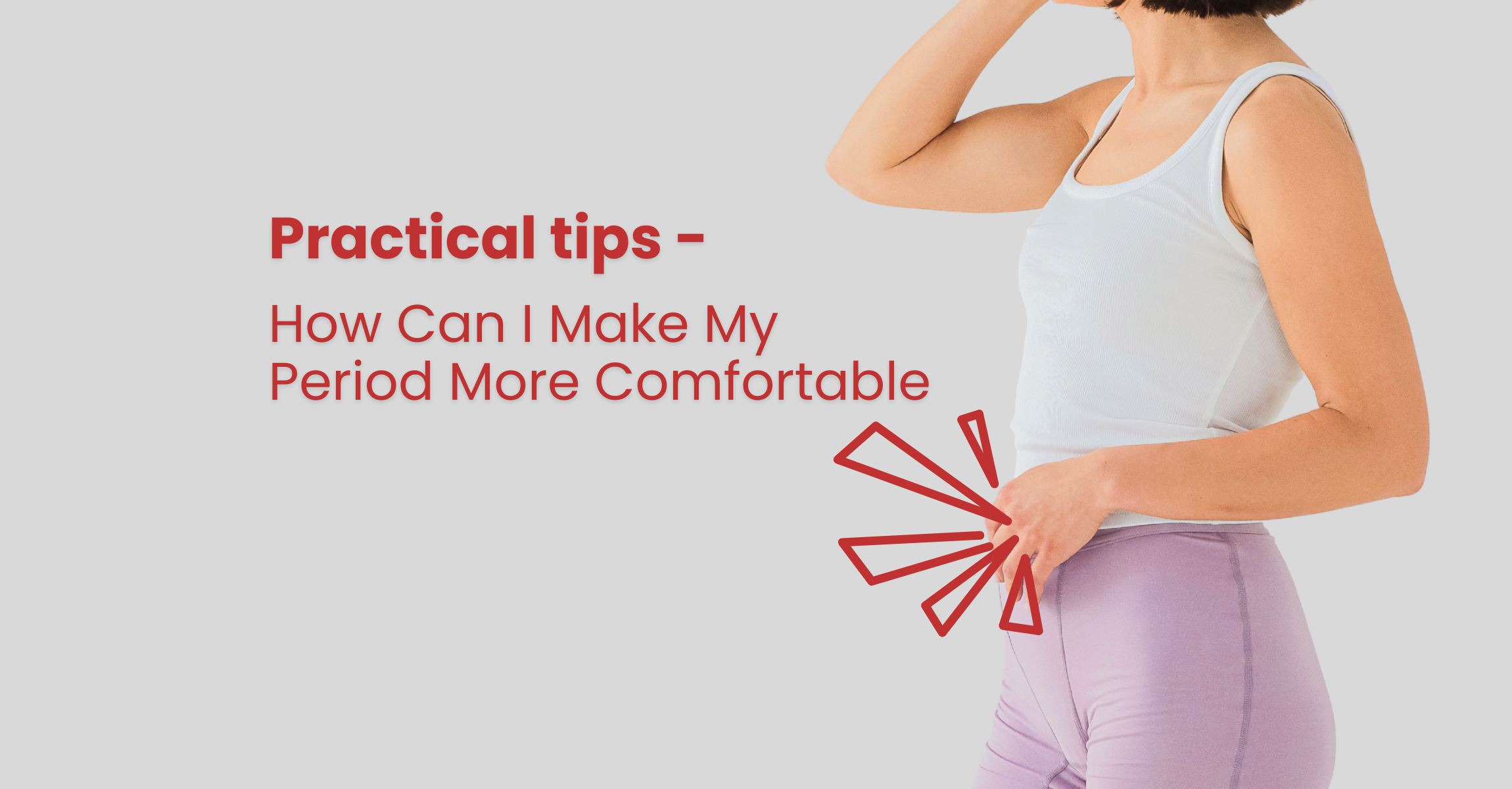Period pain is frustrating—and for many of us, it’s more than just a mild inconvenience. From cramps and bloating to fatigue and mood swings, these symptoms can make even the simplest tasks feel harder. The good news? What you eat can actually make a difference.
Certain foods can support your body during your period by reducing inflammation, balancing hormones, and replenishing lost nutrients. On the flip side, some ingredients may actually make cramps worse or leave you feeling more sluggish.
Let’s take a look at what the research says—so you can make food choices that work with your cycle, not against it.
Why Food Affects Menstrual Pain
During menstruation, your uterus contracts to help shed its lining. This process is triggered by hormone-like compounds called prostaglandins. When prostaglandin levels are too high, those contractions become stronger—and that’s when pain, cramping, and inflammation increase.
Certain nutrients may help regulate prostaglandin production, relax muscles, improve circulation, and even boost your mood. Others can increase water retention or cause blood sugar spikes, which may make period symptoms worse.
The Best Foods to Eat During Your Period
1. Leafy Greens
Spinach, kale, and Swiss chard are high in magnesium and iron—two nutrients that your body especially needs during your period. Iron helps replenish what you lose through bleeding, while magnesium supports muscle relaxation and can ease cramps.
🫛 Try this: Add baby spinach to smoothies, sauté kale with garlic, or stir Swiss chard into lentil soup.
2. Fatty Fish
Omega-3 fatty acids, found in fish like salmon, sardines, and mackerel, are powerful anti-inflammatories. They help reduce the intensity and duration of cramps and may also support mood stability.
🐟 Try this: Grill salmon with lemon and herbs, or make a tuna and avocado salad for a quick, satisfying lunch.
3. Nuts and Seeds
Almonds, flaxseeds, pumpkin seeds, and walnuts are all rich in magnesium, zinc, and healthy fats. These nutrients can help ease bloating and support hormonal balance.
🌰 Try this: Snack on a trail mix of walnuts, sunflower seeds, and dried cranberries—or sprinkle ground flaxseed over yogurt or oatmeal.
4. Bananas and Berries
Fruits high in potassium (like bananas) can help reduce bloating by encouraging your body to release excess water. Berries bring antioxidants and vitamin C, which help with inflammation and immune function.
🍌 Try this: Blend a banana-berry smoothie with almond milk for a hydrating, anti-cramp drink.
5. Whole Grains
Brown rice, oats, quinoa, and whole grain bread provide fiber to support digestion and steady energy levels. They also contain B vitamins, which help reduce fatigue and irritability.
🥣 Try this: Start your day with oatmeal topped with seeds and fruit, or opt for a quinoa salad at lunch.
6. Dark Chocolate (Yes, Really)
Dark chocolate (70% cocoa or higher) is rich in magnesium and can satisfy those sweet cravings in a healthier way. Just stick to small portions and low added sugar.
🍫 Try this: Enjoy a couple of squares of dark chocolate with a handful of almonds after dinner.
7. Herbal Teas
Ginger tea is known for its anti-inflammatory effects and can help reduce nausea and pain. Chamomile tea supports relaxation and may ease anxiety or trouble sleeping.
🍃 Try this: Sip on warm ginger or peppermint tea when cramps start to kick in.
What to Avoid When You Have Menstrual Pain
Just as some foods help reduce symptoms, others can make them worse. Here’s what to watch out for:
1. Caffeine
Too much caffeine can constrict blood vessels, increasing cramps and breast tenderness. It may also make you more jittery or affect your sleep—two things you don’t need during your period.
🍵 Try this instead: Swap your third coffee for green tea or matcha, which has less caffeine and added antioxidants.
2. Salty Foods
Chips, fast food, and heavily processed snacks can increase water retention and make bloating worse. Sodium also disrupts your body’s fluid balance, which can make cramps more noticeable.
🍟 Try this instead: If you’re craving crunch, opt for roasted chickpeas or lightly salted popcorn made at home.
3. Refined Sugar
High-sugar foods cause spikes and crashes in blood sugar levels, which may worsen mood swings and fatigue. Sugar also promotes inflammation, which isn’t ideal when you’re already cramping.
🍪 Try this instead: Reach for fruit or dark chocolate, or make energy bites with oats, dates, and nut butter.
4. Red Meat
While red meat contains iron, it’s also high in saturated fats that can increase prostaglandin production. That may intensify cramps and inflammation.
🍳 Try this instead: Choose leaner protein sources like lentils, eggs, or grilled chicken, especially during your heaviest days.
5. Dairy (For Some People)
Some people find that milk, cheese, or ice cream trigger bloating or worsen cramps due to arachidonic acid, another inflammation-promoting compound.
🥛 Try this instead: If dairy bothers you, try almond or oat milk and non-dairy yogurts.
A Final Word on Period Comfort
Eating well during your period won’t make every symptom disappear. But it can absolutely help you feel more comfortable, in control, and supported from the inside out.
Speaking of Comfort…
If period pain has you worried about leaks or discomfort while sitting, walking, or even sleeping—you're not alone. That’s why our period underwear is designed with real life in mind.
💗 For your heaviest days:
Remi is our ultra-high-rise full brief that absorbs up to 70ml—perfect for overnight wear or serious flow. It features a soft fabric-only waistband and full front-to-back protection.
💗 For daytime comfort:
Margo is a mid-rise bikini briefs that are cut slightly cheeky through the hips and bum. It absorbs up to 45ml and is excellent for all day wear.
💗 All styles are PFAS-free, made from our signature bamboo blend for a stretchy, supportive feel.
Ready to upgrade your period experience?
👉 [Explore our absorbent styles here].





